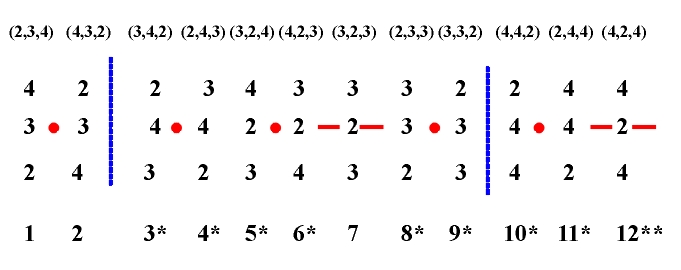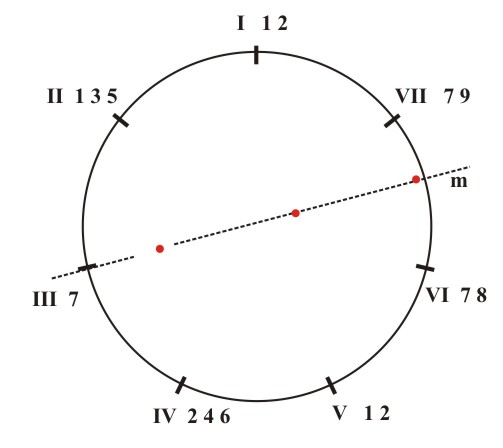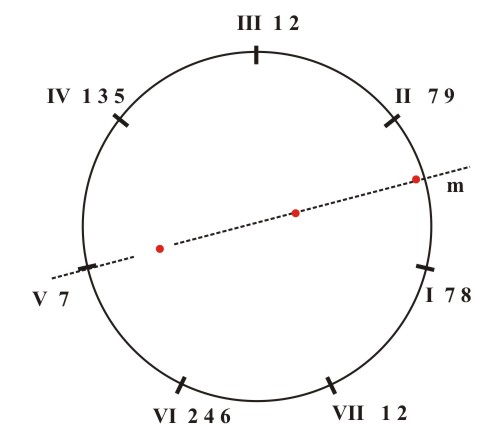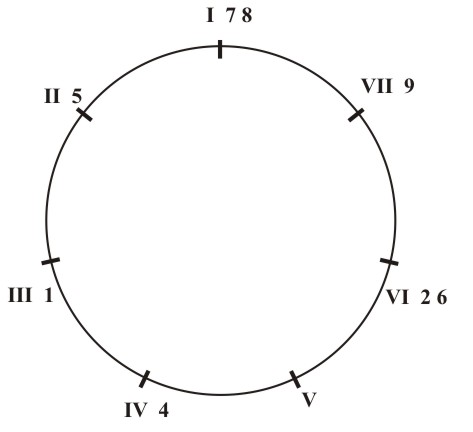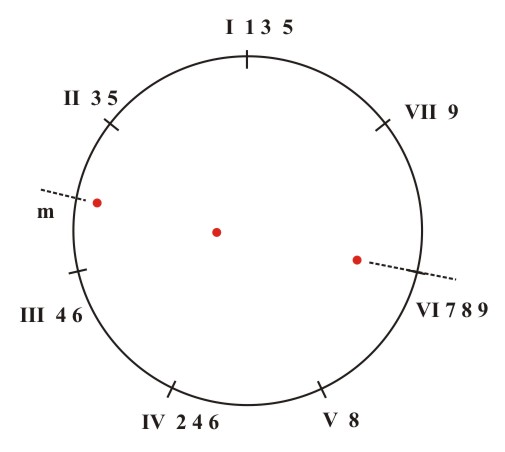|
Symmetry of chromatic seven-chords
In the same manner we can approach the study of the symmetry structure of chromatic seventh-chords. In the case of the chromatic seventh-chords there are twelve possibilities for their construction from intervals (4,3,2) (third, minor third, and diminished third). They correspond, respectively, to a seventh-chord with a diminished third and a doubly diminished fifth (2,3,4) (1), a diminished seventh-chord (4,3,2) (2), diminished minor seventh-chord (3,4,2) (3), seventh chord with a diminished third and a diminished fifth (2,4,3) (4), seventh chord of minor third and a doubly diminished fifth (3,2,4) (5), minor seventh-chord with a diminished fifth (4,2,3) (6), three types of seventh-chords generated from two minor thirds and a major third (3,2,3) (7), (2,3,3) (8), (3,3,2) (9) and three types of seventh-chords consisting of two major thirds and a diminished third (4,4,2) (10), (2,4,4) (11) and (4,4,2) (12). We cite these chromatic seventh-chords along with the corresponding symmetry transformations:
Besides the dissonant interval i=2, the chromatic seventh-chords 3,4,5,6,8,9,10,11 each contain one tritone interval i=6, and the chromatic seventh-chord 12 contains two tritone intervals. Based on the diagram of interval structure (Fig. 5.16), we directly get a table of the appearance of chromatic seventh-chords in the major, natural minor, harmonic minor, and melodic minor keys.
(a)
(b)
(c)
(d) Figure 5.18. The symmetry structure of chromatic seventh-chords in the major (a), natural minor (b), harmonic minor (c) and melodic minor key (d). From the above table we can deduce that chromatic seventh chords consisting of two major thirds (i=4) and a diminished third (i=2) 10,11,12 are an exception, since the corresponding sequences of tonal pitches do not occur simultaneously in any scale. All of the three mentioned chromatic seventh-chords may be obtained in the most economic manner, by way of alteration of only one tone of the leading seventh (3,3,4) or the dominant seventh chord (4,3,3). These two seventh chords occur in all scales. Even with the absence of chromatic chords in some degrees, and owing to the fact that in certain degrees a variety of different chromatic chords can occur, the versatility of chromatic chords is significantly higher than that of consonant chords. In further research it is possible to transform chromatic fifth-chords by the following isometric transformations: transposition (translation) and retrograde inversion (central reflection). In this manner a chromatic tonality extension occurs by introducing side and variant chromatic chords and chromatic mediants. In this sense, it is possible to study the symmetry of chromatics (the presence of chromatic chords and the appearance of resultant symmetry structures) in every musical piece.
|
